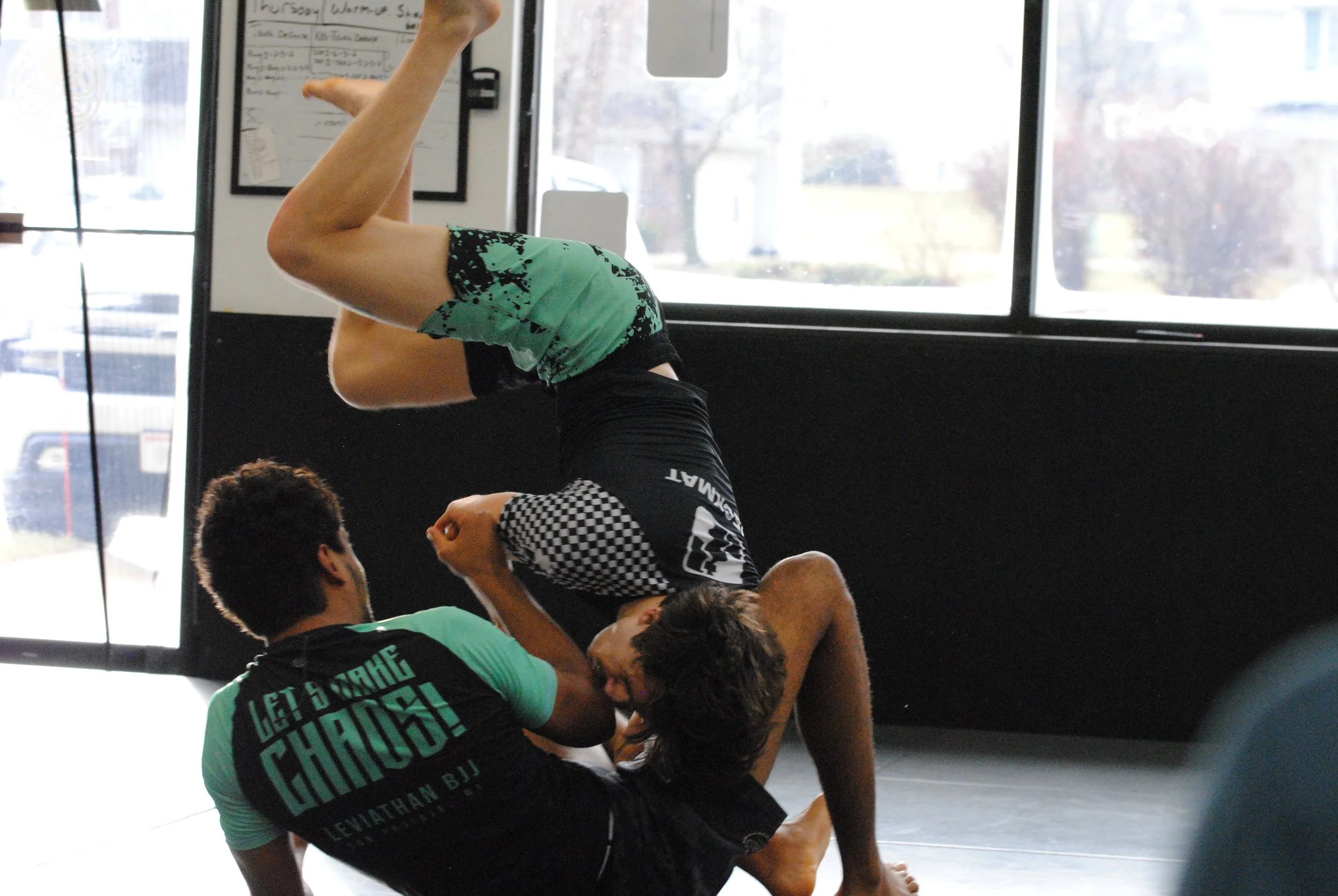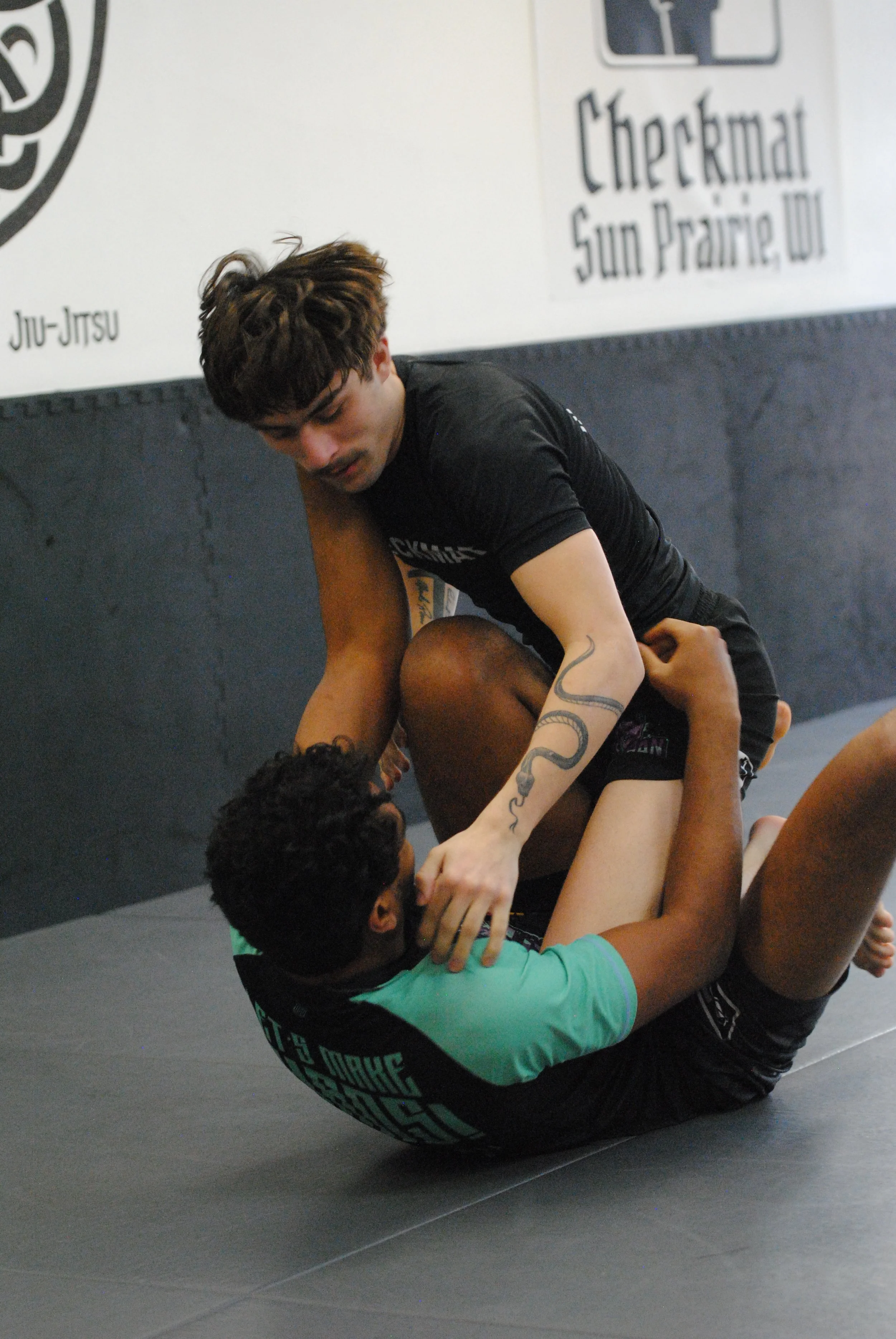Brazilian Jiu-Jitsu (BJJ) is a grappling-based martial art focused on ground fighting, leverage, and technique rather than reliance on brute strength alone. It emphasizes controlling an opponent through positional dominance and submitting them with a wide variety of attacks. As its name suggests, this martial art traces its roots to Brazil where it was originally adapted from other martial arts such as traditional Japanese Jiu-Jitsu and Judo. Today, BJJ has evolved into one of the most effective and widely practiced martial arts in the world both competitively and recreationally.
BJJ training places a heavy emphasis on detailed instruction and practical application through live sparring, often called "rolling”. It is practiced in two main styles: Gi and No-Gi, each offering a distinct set of rules, grips, and strategies.
Brazillian Jiu-Jitsu
Gi Jiu-Jitsu
Gi BJJ is practiced wearing a traditional uniform called a "gi" or "kimono". The gi allows for a wide array of grips and control techniques, as the jacket, pants, and belt can all be grabbed to manipulate an opponent. Primary tenets of gi BJJ are:
Control Through Grips: gi training emphasizes grip fighting and control, using the opponent’s clothing for chokes, sweeps, and positional dominance.
Technical Variety: There is a broader range of techniques due to the ability to grip the fabric, allowing for intricate lapel chokes and slower, more methodical setups.
Strategic Pace: With the heightened ability to control the opponent’s movement, the pace of the engagement can also be more strategically driven.
No-Gi Jiu-Jitsu
No-Gi BJJ is practiced without the gi. Instead, practitioners wear rash guards, shorts, and sometimes spats. Since there are no collars, sleeves, or pants to grip, the style relies more on body control, underhooks, overhooks, and positional pressure. Primary tenets of No-Gi BJJ are:
Body Manipulation: Rather than relying on control of an opponent’s clothing, No-Gi BJJ utilizes other grips on the appendages and core to achieve dominance.
Dynamic Movement: Without the ability to grip clothing, exchanges in No-Gi tend towards explosive scrambles, transitions, and escapes.
Speed: No-Gi tends to be faster-paced due to the absence of grips, requiring quicker transitions and reactions.
Benefits of Training Jiu-Jitsu
Self-Defense Skills: BJJ teaches effective grappling and control techniques and builds awareness in high-pressure situations.
Strength & Conditioning: Build muscle strength and endurance.
Physical Fitness: Improve your cardiovascular strength, flexibility, and mobility.
Mental Health: Reduce stress and anxiety while building focus. BJJ aids in self-confidence and perseverance.
Community & Camaraderie: Build friendships and join in the community of like-minded individuals.
Who Can Train Jiu-Jitsu?
Jiu-Jitsu is suitable for all fitness levels and ages! It can be practiced as a sport, self-defense method, or fitness regimen both casually and for competition.







